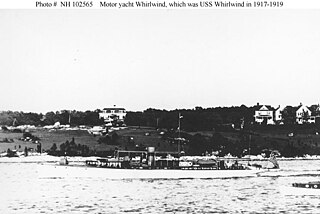
Charles Henry Fletcher organized and led The Centaur Company, makers of "Fletcher's Castoria", serving as President and General Manager.

Morris Heights is a residential neighborhood located in the West Bronx. Its boundaries, starting from the north and moving clockwise are: West Burnside Avenue to the north, Jerome Avenue to the east, the Cross-Bronx Expressway to the south, and the Harlem River to the west. University Avenue is the primary thoroughfare through Morris Heights.
Canadian Vickers Limited was an aircraft and shipbuilding company that operated in Canada during the early part of the 20th century until 1944. A subsidiary of Vickers Limited, it built its own aircraft designs as well as others under licence. Canadair absorbed the Canadian Vickers aircraft operations in November 1944.

Kanawha was a 471-ton steam-powered luxury yacht initially built in 1899 for millionaire industrialist and financier Henry Huttleston Rogers (1840–1909). One of the key men in the Standard Oil Trust, Rogers was one of the last of the robber barons of the Gilded Age in the United States. He was also a "secret" philanthropist.

USS Edithena was a United States Navy patrol vessel in commission from 1917 to 1919 that saw service during World War I. Prior to her U.S. Navy service, she operated as the private motor yacht Edithena from 1914 to 1917. After the conclusion of her U.S. Navy career, she served as the fishery patrol vessel USFS Widgeon in the fleet of the United States Bureau of Fisheries from 1919 to 1940 and as US FWS Widgeon in the fleet of the Fish and Wildlife Service from 1940 to 1944 or 1945. By 1947 she had returned to private ownership, first as Edithena and during the 1970s and 1980s as the fishing vessel Ila Mae.

USS Halcyon II (SP-582) was a yacht acquired by the U.S. Navy during World War I. She was outfitted as an armed patrol craft and stationed in Boston harbor in Massachusetts. She spent much of the war patrolling the Massachusetts waterways for German submarines and, in 1919, was decommissioned after being damaged in a collision.

USS Wacondah (SP-238) was an advanced-design yacht acquired by the U.S. Navy during World War I. She was outfitted as an armed patrol craft assigned to guard the New York City harbor against German submarines and to provide escort protection to commercial ships. Post-war she was sold and continued her maritime career as the yacht Intercolonial.

USS Arcturus (SP-182) was a yacht acquired by the U.S. Navy during World War I. She was reconfigured by the Navy as an armed patrol craft, and was assigned to patrol the waterways of New York City.

The shipwreck site of the motor launch Forward is located in Lake George, New York approximately three and one half miles north of the village of Lake George. The motor launch was built in 1906 by Gas Engine & Power Co. and Charles L. Seabury & Co., Consolidated. It was one of the first gasoline-powered vessels on Lake George. The original owner was William K. Bixby.

The first USS Whirlwind (SP-221) was a United States Navy patrol vessel in commission in 1917 and again in 1918.
Henry B. Nevins (1878–1950) was a master yacht builder and author on vessel construction in City Island, New York. Born in New York in 1878, Nevins wanted to be a doctor but was too frail, so he decided to work Gas Engine & Power Company before deciding upon his hobby, shipbuilding by apprenticing at Charles L. Seabury Company in City Island, New York. At age 29, Nevins bought the nearby Hansen Boat Yard in City Island in 1907 and founded Henry B. Nevins, Incorporated. Later Nevins would purchase the nearby Byles Yard to increase his acreage. Nevins' company built custom cruising and racing craft as well as minesweepers during World War II as part of the war effort.
USS Speedway (SP-407) was a United States Navy patrol vessel in commission from 1917 to 1919.

USS Anado (SP-455) was a United States Navy patrol vessel in commission from 1917 to 1919.

USS Vivace (SP-583) was a United States Navy patrol vessel in commission from 1917 to 1918.

USS Linta (SP-721) was a United States Navy patrol vessel in commission from 1917 to 1919.
USS Toxaway (SP-743) was a United States Navy patrol vessel in commission from 1917 to 1918.

USS Verdi (SP-979) was a United States Navy patrol vessel in commission from 1917 to 1918.

USS Tommy Traddles was a motorboat the United States Navy acquired for use as a patrol vessel in 1917 but never commissioned.

USS Onward (SP-311), a former yacht named Galatea and then Ungava was a patrol yacht acquired by the U.S. Navy during World War I. She was transferred to the U.S. Coast and Geodetic Survey where she served briefly until return to the Navy for a brief time before her disposal by sale. She was renamed Thelma Phoebe.
















